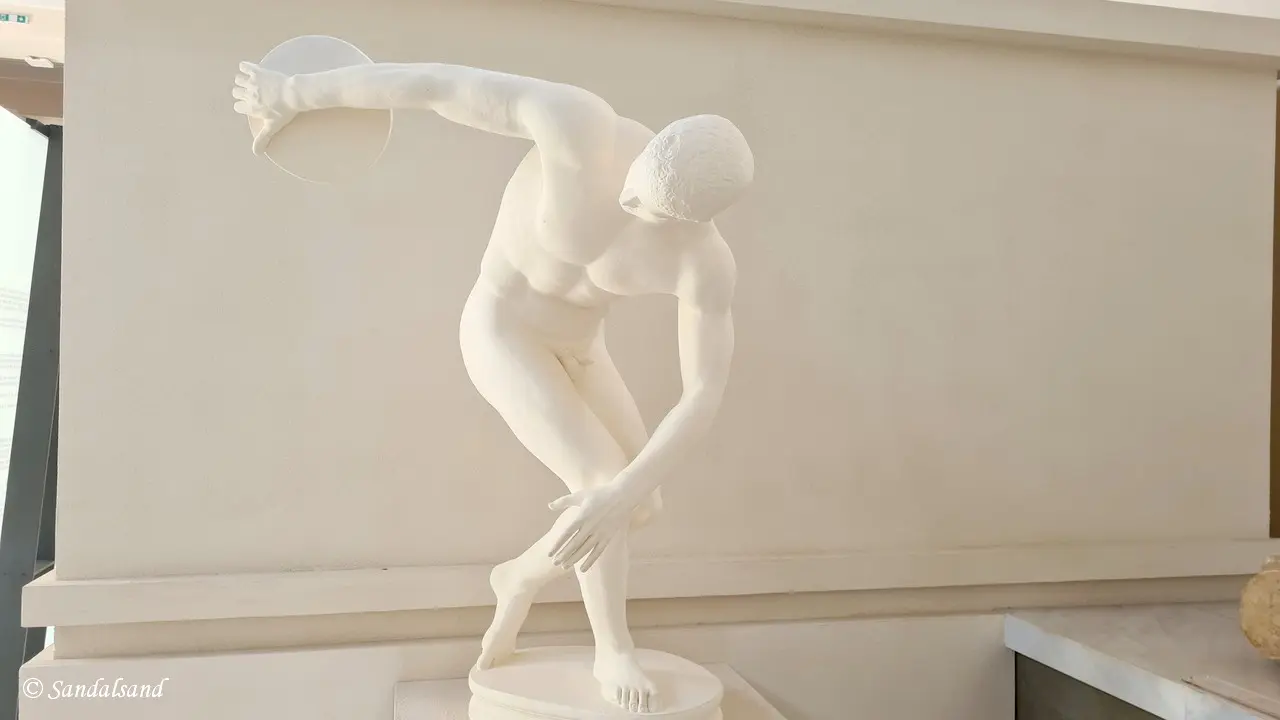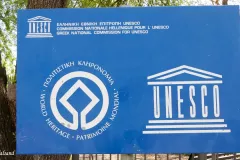At the Archaeological Site of Olympia the Olympic Games were held without a break from 776 BC to AD 393, a period of 1169 years. They took place every four years.
The UNESCO World Heritage List includes over a thousand properties. They have outstanding universal value and are all part of the world’s cultural and natural heritage.
Official facts
- Official title: Archaeological Site of Olympia
- Country: Greece
- Date of Inscription: 1989
- Category: Cultural
UNESCO’s World Heritage Centre’s short description of site no. 0517:
The site of Olympia, in a valley in the Peloponnesus, has been inhabited since prehistoric times. In the 10th century B.C., Olympia became a centre for the worship of Zeus. The Altis – the sanctuary to the gods – has one of the highest concentrations of masterpieces from the ancient Greek world. In addition to temples, there are the remains of all the sports structures erected for the Olympic Games, which were held in Olympia every four years beginning in 776 B.C.
About the site of Olympia
The World Heritage Centre elaborates further on the history of Olympia:
“The sanctuary of Olympia, in the North West of the Peloponnese, in the Regional Unit of Eleia (Elis), has been established in the valley created by the confluence of the Alpheios and Kladeos rivers in a natural setting of beauty and serenity. The Pan-Hellenic sanctuary has been established in the history of culture, as the most important religious, political and sports centre, with a history that dates back to the end of the Neolithic times (4th millennium BC).
The famous sanctuary became the centre of worship of Zeus, the father of the twelve Olympian gods. For the Altis, the sacred grove and the centre of the sanctuary, some of the most remarkable works of art and technique have been created, constituting a milestone in the history of art. Great artists, such as Pheidias, have put their personal stamp of inspiration and creativity, offering unique artistic creations to the world. In this universal place, the Olympic Idea was born, making Olympia a unique universal symbol of peace and competition at the service of virtue. Here, too, prominence was given to the ideals of physical and mental harmony, of noble contest, of how to compete well, of the Sacred Truce; values, which remain unchanged in perpetuity.”
The Olympic games of the Antiquity
UNESCO emphasises the worship of Zeus and the large number of monuments that still exists on the site. However, the site’s importance and attraction derives to a perhaps larger extent from the period of holding athletic games here. They took place every four years, over a period of 1169 years. Today we may think that a long time has passed since the first modern Olympic games, in Athens, back in 1894. In reality, this is a very short time in comparison to the original games.
Organisation of the games
Here is an explanation from an information poster in the museum:
The duration of the games was directly related to the number of events. From the beginning (776 BC) down to 684 BC, with only athletic events, they lasted a single day. From 680 BC (25th Olympiad), when they introduced chariot races, they increased the period to two days. In 632 BC (37th Olympiad) with the introduction of the boys’ events, they added a third day. Finally, two more days in 472 BC (77th Olympiad) ensured a smoother organisation of the events, making a total of five days.
The responsibility for the organisation and conduct of the Olympic Games lay with the Eleians. One of the most important institutions at the Olympic Games was the Sacred Truce – the suspension of all hostilities between belligerents for a brief period before, during and after the end of the games, to enable them to be conducted properly. Belief in this institution reflects an important fact. Despite the continuous warfare in ancient Greece, they never cancelled the Olympic Games. The games were finally abolished by the Roman emperor Theodosios I, for religious reasons.
Special officials called spondophoroi travelled in groups of three to all the Greek cities to announce the beginning of the Sacred Truce and the exact date of the games. The Eleians prepared and maintained the areas of the sanctuary and the athletic venues at Olympia, and attended to the reception and housing of the athletes and their attendants and of the official representations sent by the Greek cities.
My visit
We find the archaeological site of Olympia in the western part of the Peloponnese, which is the large peninsula (island) to the west of Athens. It lies next to the modern, and pleasant town of Archaia Olympia. There are a couple of parking lots outside the two entrances, each next to the two museums on the site.
The archaeological museum
The first museum I visited was the Archaeological Museum of Olympia. It is a one-story building holding many of the smaller objects excavated from the archaeological site. This is an interesting exhibition, but they could perhaps develop it with a few more information posters.
The archaeological site
Next up is the large area which make up the archaeological site itself. Take your time and read the information posters along the route you choose to walk. On the other hand, these are ruins and not one single building remain standing. For my part the gymnasium, where the athletes would train in preparation of the games, was interesting. And then we have the stadium, the venue at which they held most of the games. It is also here they light the torch for the modern Olympic games.
The museum of the history of the Olympic games of antiquity
To me this museum was very interesting in that it showed, in artefacts and information boards, the content and development of the ancient games.
All in all, it is not difficult to agree with UNESCO. “The visitor of today, when visiting the archaeological site of Olympia, can feel the spirituality and ideological weight of this Olympian landscape.”




















